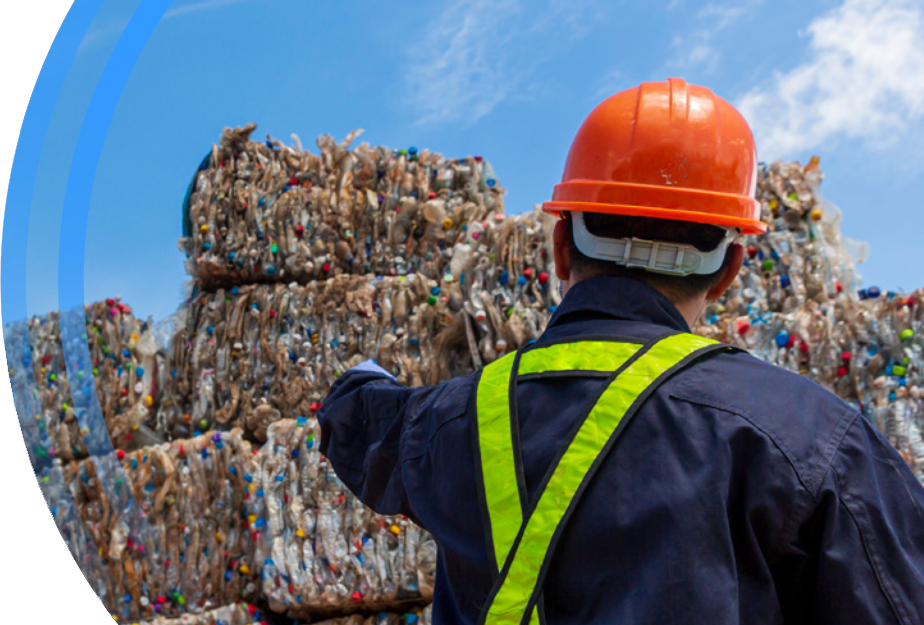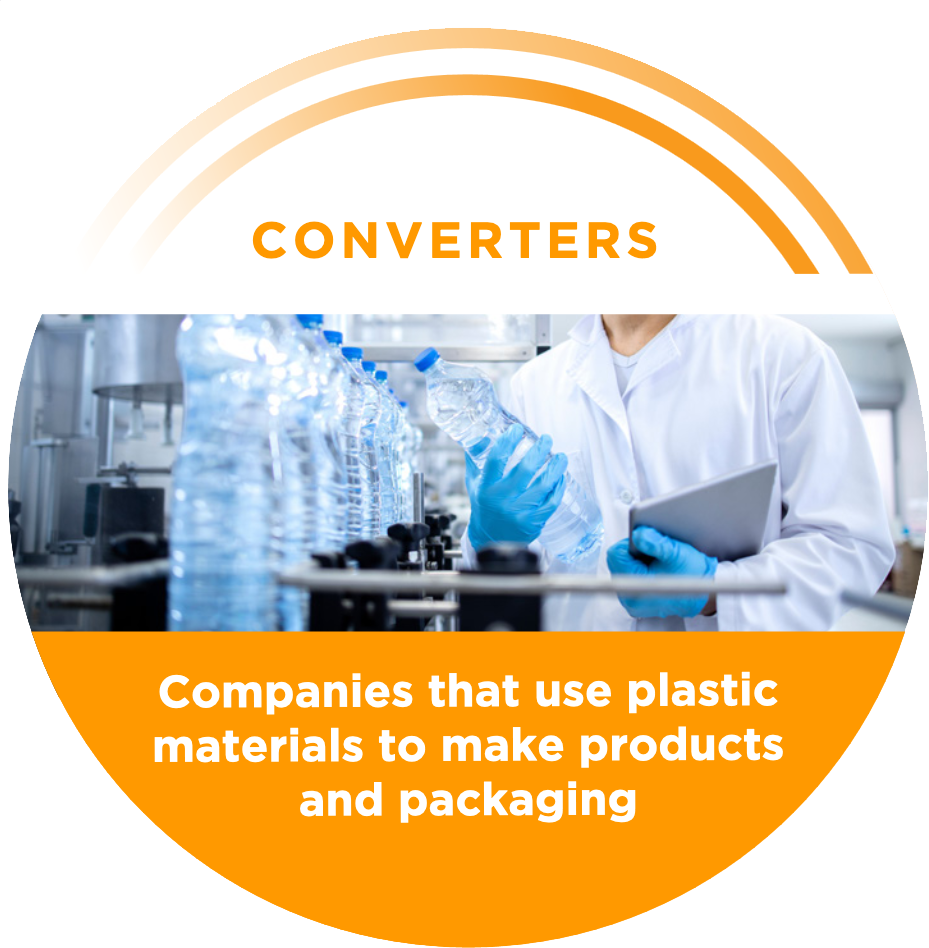
THE PLASTICS RECYCLING CHAIN
Plastics recycling = recovering used plastic products and packaging at the end of their useful life and reprocessing the material for use in new products and packaging.

Recycling plastics to make new products — rather than using fossil resources — conserves natural resources, saves energy, reduces greenhouse gas emissions, contributes to the economy and creates jobs. And it helps keep plastic waste out of the environment.
Plastics recycling is key to creating a circular economy for plastics, in which plastics are sustainably produced, designed, used, reused and recycled instead of discarded.

Learn more creating a circular economy for plastics helps achieve UN Sustainable Development Goals.
Plastics recycling is at various stages of development in different parts of the world. We can dramatically increase recycling by creating the right enabling conditions in global agreement on plastic solutions.

Learn more our ambition for a global agreement for a sustainable, circular economy.
The Players in the Plastics Recycling Chain
To recycle plastics, an interwoven chain of players must work in concert. The plastic recycling chain can be viewed as a virtuous circle in which each player in turn enables another player.
In reality, there is no start or finish to the plastics recycling chain, just as there is no start or finish to a circle this infographic depicts that circle.

These three players must collaborate to design products and packaging that are reusable and recyclable.

Let’s follow the players and their role in creating
a circular economy for plastics…

Role: Enable Collectors by recovering plastic products/packaging
While we could start anywhere in this circle, let’s start with the demand. People (and companies) all over the world buy shoes, packaged food, autos, toys, clothing and so on, which typically are made with plastic materials.
Learn how and where plastics are made and used.
While today most of these items are discarded, successful recycling requires all of us to recover them (and to choose products made with recycled plastics). Behavioral change through incentivizing people that leads to broad participation in waste collection program is essential to create a circular economy.
Approximately 2.7 billion people
lack access to basic waste management. Creating universal access to collection and environmentally sound waste management is the first step toward circularity. Eliminating plastic pollution is not realistic until we close this gap and create a circular economy in which used plastics are no longer perceived as waste.


Role: Enable Sorters by collecting plastic products/packaging
After consumers deposit plastics into recycling bins, collectors pick up and consolidate the materials. This responsibility varies widely across the world. Some collectors are government entities, others are private industry paid by fees, and still others are individuals who collect materials informally, outside typical regulated entities (sometimes known as the informal sector or waste pickers). Regardless, wider collection of plastics is essential to create a circular economy.

Role: Enable Re-processors by sorting plastics
There are many types of plastics, and it’s often necessary to sort them before re-processing. While some collectors are also are sorters, there are multiple entities that play this role. Innovative technologies and systems are also needed (and are under advanced development) to sort plastics more efficiently and effectively, which is essential to create a circular economy.

Role: Enable Plastic Material Makers and Converters by creating recycled content feedstocks
Reprocessors, or often called recyclers, convert plastics into materials that are used to make new plastic products and packaging.
Mechanical re-processors use heat and pressure to essentially melt plastics and then return them to their original solid form (typically/small pellets). Chemical re-processors convert plastics into their liquid/gas building blocks. Plastic material makers then convert these liquies/gases into solid form plastics (again, typically pellets). At this point, these mechanically or chemically re-processed materials are called “recycled plastics”. These materials then are sold to companies (typically called “converters”) that make plastic products and packaging.
Both mechanical and chemical re-processing help displace the need for fossil resources for making plastics and keep these used plastics out of our environment — key environmental benefits of recycling plastics. A significant increase in recycled feedstocks for plastics is essential to create a circular economy.


Role: Enable Converters by creating recycled plastic materials
In the plastic recycling chain, plastic material makers use the materials from re-processors to create the material used by the “converters” thatmake plastic products or packaging. Materials companies often purchase mechanically recycled plastics and blend them with virgin plastics before sale. And/or they purchase the “feedstocks” from chemical re-processors to make new plastics. Significantly increased recycled content plastic materials are essential to create a circular economy.
FYI: Some companies play more than one role in the plastics recycling chain. For example, some plastic materials makers also re-process used plastics to make new plastic materials.

Role: Enable Product Companies & Retailers by making products & packaging from recycled plastics
This large and diverse business sector uses plastic materials to make everything from auto parts to building insulation to food packaging. A growing number of these companies want to use as much recycled plastic materials as possible. This helps their customers – Products Companies & Retailers – meet their sustainability goals, such as using more recycled content, which is essential to create a circular economy.

Role: Enable Consumers by designing for recycling
Products and packaging made with plastics typically are valued for being lightweight, efficient and economical. This helps reduce energy use, waste, and greenhouse gas emissions from products and packaging compared to many available alternative materials — which is a central reason companies choose plastics. But these products/packaging can be difficult to recycle and often are excluded from recycling/collection programs. Collaboration between Product Companies & Retailers and Plastic Material Makers and Converters is necessary to design products that are accepted in Consumer’s collection programs, which is essential to create a circular economy.
And we’re back to Consumers again in a circular loop. A loop that never begins and never ends. As long as all players do their part.

Learn how a global agreement on plastic pollution can contribute to a circular economy for plastics.
Championing a global agreement for a sustainable, circular economy.
FOR MORE INFORMATION VISIT PLASTICSCIRCULARITY.ORG
